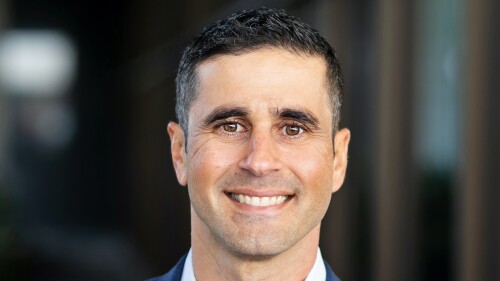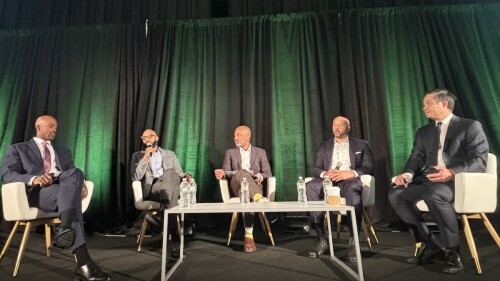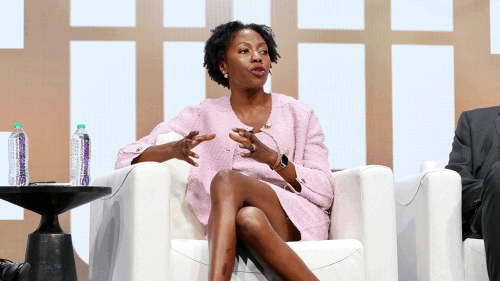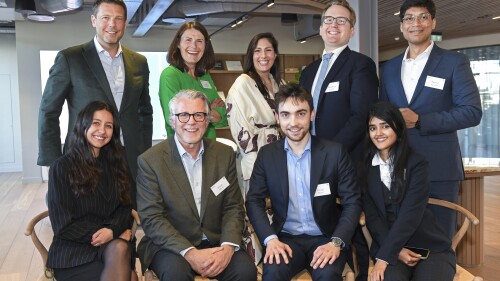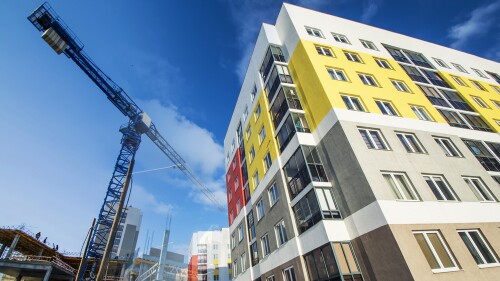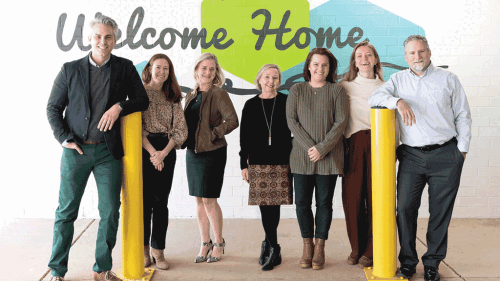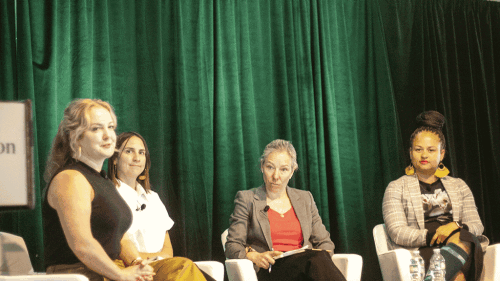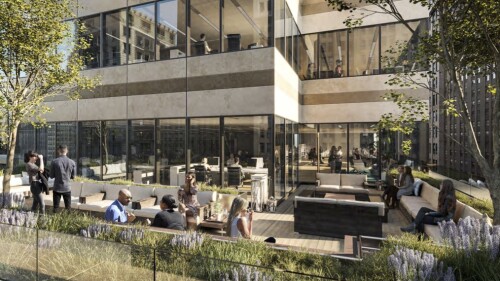Topics
Capital Markets and Finance
In the first quarter of the year, we saw a palatable increase in financing requests from a variety of sponsors providing some optimism that real estate activity may be picking up. And while very few could be categorized as “good news” transactions, the vast majority were clearly indicative of what we are seeing in the market.
This is the second installment of Urban Land’s coverage of a special three-part capital markets series held at ULI’s Spring Meeting in New York City (March 9-11; you can read coverage of Part 1 here).
It’s tough to view a strong economy as bad news. Yet a firmly positive economic projection in ULI’s Real Estate Economic Forecast does not bode well for commercial real estate participants who are hoping for relief in rate cuts from the U.S. Federal Reserve.
Design & Planning
After developer Bruce Etkin, a past ULI Trustee and a current member of the ULI Foundation board, sold all of his company’s properties in 2021, he channeled his energy and attention to different challenges—one of them homelessness.
A team from ESSEC Business School in France has been named the winner in this year’s prestigious ULI Hines Student Competition – Europe. The results were announced by ULI and Hines, the global real estate investor, developer, and property manager, following the final of the fifth annual pan-European competition for integrated and multidisciplinary urban regeneration.
Experts say the real estate market in our cities is responding to the dramatic changes caused by COVID with a “flight to quality.” This headline suggests optimism that a safe harbor still exists out there as does the fear that we all need to act fast and run (for our lives) before things get bad. It reflects a winnowing to the essential characteristics that can ensure the best overall return and insulate us from the changing winds in the economy.
Development and Construction
Donations to the ULI Foundation support a wide variety of programs, initiatives, and groups, and among the options, donors may choose to
direct their gifts to their local ULI District Council. Three donors who have made recent substantial contributions to their respective District
Councils—Jack Cohen, Marc Pollack, and Greg West—highlight the impact individuals can have on their local communities. Their gifts, ranging from $15,000 to $100,000, enable their local District Councils to advance ULI’s mission priorities and carry out community outreach, all while helping members build relationships and share educational and other resources in their area.
direct their gifts to their local ULI District Council. Three donors who have made recent substantial contributions to their respective District
Councils—Jack Cohen, Marc Pollack, and Greg West—highlight the impact individuals can have on their local communities. Their gifts, ranging from $15,000 to $100,000, enable their local District Councils to advance ULI’s mission priorities and carry out community outreach, all while helping members build relationships and share educational and other resources in their area.
Headlines have long proclaimed the demise of the American shopping mall. Despite undeniable shifts in the retail landscape, the truth about these spaces is more nuanced. These massive parcels often stand in prime locations and therefore hold massive potential to sidestep scrap-and-redevelop and to truly evolve.
According to the Pew Research Center, between 1971 and 2021, the number of people living in multigenerational households quadrupled, while the number of people in other living situations is less than double what it was. The share of the U.S. population living in multigenerational households in 2021 was 18 percent.
Resilience and Sustainability
As the real estate industry accelerates its net zero journey, reducing embodied carbon has become a critical focus. Embodied carbon represents the carbon emissions tied to material extraction, production, transportation, disposal, and building construction. These emissions account for 11 percent of global annual carbon emissions and up to 50 percent of a building’s total emissions over its lifetime.
A new initiative aimed at promoting low-carbon steel in China’s real estate sector has been launched, co-convened by ULI Greenprint, the World Steel Association, and the China Iron and Steel Association. This collaboration unites major real estate developers and steel manufacturers to drive the transition to low-carbon steel production, with the goal of significantly reducing emissions in Mainland China and Hong Kong. China’s steel industry plays a pivotal role in global efforts to combat climate change.
Hurricanes damage and disrupt communities, properties, and economies in various ways, whether direct, indirect, or both. Translating these impacts into credit risk and other financial implications can be complex. However, a range of tools and analyses enables lenders, investors, and developers to pre-emptively anticipate hurricane damage when a storm approaches, as well as to adjust long-term strategy to mitigate risks and seize opportunities over time.
Issues and Trends
The number of people experiencing homelessness grew by 12 percent in 2023—but Rosanne Haggerty, president and CEO of Community Solutions, a nonprofit recognized for developing innovative solutions to end homelessness, says homelessness is a solvable problem. Haggerty believes that real estate professionals are uniquely positioned to get everyone working toward the same goal of providing basic housing and infrastructure for unhoused people. Haggerty’s organization is taking advantage of increased awareness of the problem by partnering with corporations, banking institutions, government agencies, and philanthropists to help shelter unhoused people.
Developers of middle-income projects can’t use subsidy programs such as federal low-income housing tax credits (LIHTCs) to finance their plans. Middle-income developments also often don’t earn enough in rent to support conventional construction loans or attract equity investors.
The Manhattan office market is beginning to make a comeback, but much has changed since the start of the COVID-19 pandemic. The persistence of hybrid and remote work have changed the equation for commercial rentals, both in terms of landlord-tenant relationships and the quality of office product on offer.

